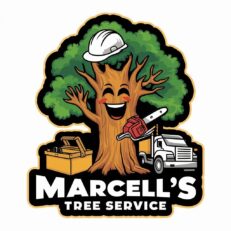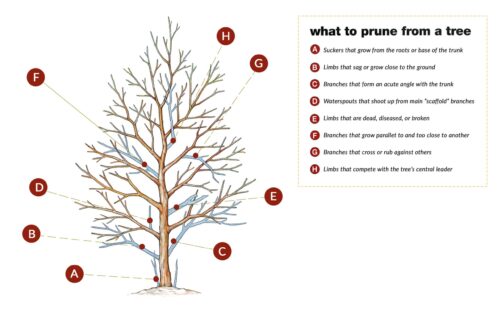Best Tree Trimming Tips: How to Prune Your Trees Safely.
Trees are an essential part of our environment, providing shade, beauty, and oxygen. However, to keep them healthy and beautiful, it is important to prune them regularly. Tree trimming can be a daunting task, especially if you are not familiar with the techniques and tools required. In this article, we will provide you with some of the best tree-trimming tips that will help you prune your trees safely and effectively.
Why is Tree Trimming Important?
Before we dive into the tree trimming tips, let’s first understand why tree trimming is important. Pruning your trees regularly has numerous benefits, including:
- Promotes healthy growth: Trimming off dead or diseased branches allows the tree to focus on healthy growth.
- Improves appearance: Pruning can help shape the tree and improve its overall appearance.
- Prevents hazards: Removing dead or damaged branches reduces the risk of them falling and causing harm to people or property.
- Increases fruit yield: Proper pruning can improve the yield of fruit-bearing trees.
Now that we understand the importance of tree trimming let’s move on to the tips.
Tip 1: Know When to Trim
Knowing when to trim your trees is crucial to their health and growth. The best time to prune depends on the type of tree you have. In general, the best time to trim trees is during their dormant season, which is usually in late winter or early spring. However, some trees, such as oak or maple, should only be pruned in late summer or fall to prevent diseases.
Tip 2: Use the Right Tools
Using the right tools is essential for safe and effective tree trimming. Some of the tools you’ll need include:
- Pruning shears: Used for trimming small branches and twigs.
- Loppers: Used for branches that are up to 2 inches in diameter.
- Pruning saw: Used for larger branches.
- Pole pruner: Used for trimming high branches.
Make sure your tools are sharp and in good condition before you start trimming.
Tip 3: Start Small
When starting out, it is best to start small and work your way up. Begin with small branches and gradually move on to larger ones. This will help you get a feel for the tools and techniques required, and reduce the risk of accidents.
Tip 4: Identify Dead and Diseased Branches
Before you start trimming, identify any dead or diseased branches. These branches should be removed first to promote healthy growth and prevent the spread of diseases.
Tip 5: Use Proper Techniques
Using proper techniques is crucial for safe and effective tree trimming. Here are some techniques to keep in mind:
- Make clean cuts: Use sharp tools and make clean cuts close to the branch collar. Avoid leaving stubs or tearing the bark.
- Trim at the right angle: Trim branches at a 45-degree angle to promote healing and prevent water from accumulating.
- Don’t remove too much: Avoid removing more than 25% of the tree’s foliage at once.
- Don’t top trees: Topping trees, or cutting off the tops, can cause irreparable damage and should be avoided.
Tip 6: Be Safe
Tree trimming can be dangerous, so it is essential to take safety precautions. Here are some safety tips to keep in mind:
- Wear protective gear: Wear gloves, eye protection, and a hard hat to protect yourself from falling debris.
- Use a ladder: Use a stable ladder that is at least 3 feet taller than the branch you are trimming.
- Have a partner: Have someone hold the ladder and assist you if needed.
- Stay away from power lines: Keep a safe distance from power lines to avoid electric
Tip 7: Don’t Overdo It
It can be tempting to prune your trees excessively to achieve a certain look, but over-pruning can harm the tree and compromise its health. It’s important to maintain a balance between trimming and allowing the tree to grow naturally.
Tip 8: Consider Hiring a Professional
If you’re unsure about how to prune your trees or if you have a large tree that requires significant pruning, it may be best to hire a professional tree service. They have the expertise and equipment needed to safely and effectively prune your trees.
Tip 9: Don’t Forget to Clean Up
After you’ve finished trimming your trees, it’s important to clean up the debris. Dead branches and twigs can become a hazard and should be removed from the area.
Tip 10: Consider the Environment
When trimming your trees, it’s important to consider the impact on the environment. Avoid using harmful chemicals and be mindful of the impact on wildlife.
Tip 11: Prune Young Trees
Pruning young trees is crucial for their long-term health and growth. By removing dead or diseased branches, you can promote healthy growth and prevent future problems.
Tip 12: Know Your Tree Species
Different tree species have different growth patterns and requirements. Understanding your tree species is crucial for effective pruning.
Tip 13: Be Patient
Tree trimming is not a one-time fix, and it may take several years to achieve the desired results. Be patient and consistent with your pruning efforts.
Tip 14: Consider the Season
Different seasons can affect tree growth and pruning requirements. For example, in the fall, trees may go dormant and require less pruning.
Tip 15: Maintain Your Tools
Maintaining your pruning tools is essential for their effectiveness and longevity. Keep them clean and sharp, and replace them when necessary.
Conclusion
Tree trimming is an essential part of maintaining healthy and beautiful trees. By following these tips, you can ensure safe and effective pruning while promoting the long-term health of your trees.
FAQs
- What is the best time to trim trees?
- The best time to trim trees is during their dormant season, which is usually in late winter or early spring.
- How often should I trim my trees?
- The frequency of tree trimming depends on the tree species and its growth rate. As a general rule, trees should be pruned every 3-5 years.
- What are the benefits of tree trimming?
- Tree trimming promotes healthy growth, improves appearance, prevents hazards, and increases fruit yield.
- Can over-pruning harm trees?
- Yes, over-pruning can harm trees and compromise their long-term health.
- Should I hire a professional tree service?
- If you’re unsure about how to prune your trees or have a large tree that requires significant pruning, it may be best to hire a professional tree service.

